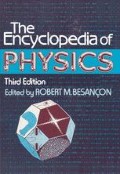Abstract
Ultrasonic waves are sound waves above the frequency normally detectable by the human ear, i.e., above about 20 kHz. The particles of matter transmitting a longitudinal wave move back and forward about mean positions in a direction parallel to the path of the wave. Alternate compressions and rarefactions in the transmitting material exist along the wave propagation direction. Such waves are possible in solids, liquids or gases. In solids, shear waves can also propagate. For these, the particles move perpendicularly to the direction of wave propagation. When material boundaries are present in the vicinity of a wave more complicated particle motions take place. Common examples are Rayleigh waves (at the boundary between a solid and air) and Lamb waves (in thin plates whose thickness is of the order of the wavelength of sound). The predominant particle displacement in these latter cases is perpendicular to the surface of the solid (see WAVE MOTION). Examples of the propagation velocities for these mode types are given in Table 1.
Access this chapter
Tax calculation will be finalised at checkout
Purchases are for personal use only
Preview
Unable to display preview. Download preview PDF.
References
Drouillard, T., “Acoustic Emission: A Bibliography with Abstracts,” New York, Plenum Data Corporation, 1979. A complete collection of abstracts for the field of acoustic emission.
Mason, W. P., and Thurston, R. N., “Physical Acoustics,” Vols. I-XV, Academic Press, New York. Definitive series on theory and techniques of ultrasonics.
Truell, R., Elbaum, C., and Chick, B. B., “Ultrasonic Methods in Solid State Physics,” New York, Academic Press, 1969. Treats research techniques.
Green, Alex S., Ed., “The Middle Ultraviolet: Its Science and Technology,” New York, John Wiley & Sons, Inc., 1966.
Samson, J. A. R., “Techniques of Vacuum Ultraviolet Spectroscopy,” New York, John Wiley & Sons, 1967.
Winick, Herman, and Doniach, S., Eds., “Synchrotron Radiation Research,” New York, Plenum Press, 1980.
Waynant, Ronald W., and Elton, Raymond C., “Review of Short Wavelength Laser Research,” Proc. I.E.E.E., 64, 1059–1092 (1976).
Eddy, John A., Guest Editor, “A Collection of Articles describing Optical Instrumentation on the NASA Skylab Spacecraft,” Applied Optics, 16, 823–1008 (1977).
Editor information
Editors and Affiliations
Rights and permissions
Copyright information
© 1990 Springer Science+Business Media New York
About this chapter
Cite this chapter
Hutchison, T.S., McBride, S.L., Tousey, R. (1990). U. In: Besançon, R.M. (eds) The Encyclopedia of Physics. Springer, Boston, MA. https://doi.org/10.1007/978-1-4615-6902-2_20
Download citation
DOI: https://doi.org/10.1007/978-1-4615-6902-2_20
Publisher Name: Springer, Boston, MA
Print ISBN: 978-0-442-00522-1
Online ISBN: 978-1-4615-6902-2
eBook Packages: Springer Book Archive

